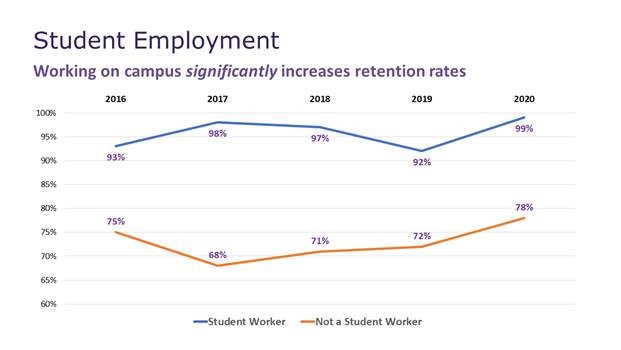Why Work on Campus?
Working on campus for 10-15 hours per week between classes or on the weekend can add a new dimension to the college experience. Work-Study gives you an opportunity to help pay for college costs, build your resume, hone your time management skills, and find mentors.
9 out of 10 students
felt their position helped prepare them to work in a professional setting to some degree
Benefits of Working on Campus
- Job Experience
Work-study jobs are valuable for career planning. The job experience can distinguish a future employment application from other job seekers. Also, an employer may be used as a reference for future jobs or graduate school applications since they can attest to your ability to work hard and be responsible. - Money
Payment of work-study funds happen regularly based on hours worked. Many students use work-study wages for educational or living expenses. - Great Location
Having a job right on campus saves time, gas, and can be a bit more flexible with your schedule since they understand how much you really have going on! - Improved Time Management
Researchers have reported that working 20 hours or less strengthens academic performance. Also, student workers tend to be retained at a higher rate than students who did not work on campus. - Gaining a Mentor/Professional Reference/Letter Writer
Building strong relationships with staff and faculty on campus can last a lifetime, Or it can last long enough to get you that letter of recommendation or reference you need for your next job or even graduate school. You need people who can act as a reference or write a letter of recommendation, and working on campus makes this easy. If it's not your direct supervisor it can be other staff members you connected with.
